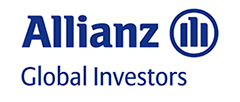Navigating uncertainty through trade finance
According to the most recent estimate by the Asian Development Bank, the global trade finance gap widened to $1.7trn in 2020
Trade finance needs are rising, driven by recent supply chain disruptions and a tightening of bank funding.
The scale of disruption caused to global trade over the past two years – including the impact of Covid-19 and geopolitical tensions – means there is significant demand for this financing mechanism, which bridges the gap between the delivery of products and payment. According to the most recent estimate by the Asian Development Bank, the global trade finance gap widened to $1.7trn in 2020.
Small and medium-sized businesses are most in need of help as some banks, the traditional key suppliers of trade finance, scaled back availability of funding in the aftermath of the pandemic.
The impact of trade disruption can fall disproportionately on the world’s poorest people, given the vital role trade plays in reducing poverty by creating jobs and stimulating economic growth.
Institutional investors in search of diversified assets can help by investing in trade finance. In return, they can gain access to the complexity premium that the asset class offers.
How does trade finance work?
Trade finance is similar to a line of credit from a third-party financier that helps companies fund the buying and selling of goods. For example, it enables suppliers to receive money straight away, despite their buyers not needing to pay until sometime in the future. Trade finance can be divided into four main categories:
-
Payable finance – supports a buyer by facilitating payments to its suppliers when invoices are raised;
-
Receivable finance – provides money to a single supplier in advance of its receiving invoice payments from several customers;
-
Working capital facilities – provide loans to one supplier repaid by receivables from several customers; and
-
Documentary credits – common instruments used by companies to finance specific trade flows and payments under commercial contracts, including letters of credit, bills of exchange and trade loans.
Why is trade finance a potentially attractive option for institutional investors?
In an environment of heightened geopolitical tensions, volatile bond yields and rising inflation, trade finance can offer the flexibility and potential returns to help investors navigate the uncertain global outlook.
Its short-term maturity profile – typically, transactions have a life cycle of between 60 and 120 days – and potentially low correlation to other asset classes can help investors manage a rising interest rate environment. Investments in trade finance can help investors manage downside risks as it tends to exhibit low volatility, as was the case during the most recent turbulence in public markets.
The asset class can also help investors meet long-term sustainability goals. Since international trade is an engine for inclusive economic growth and poverty reduction, trade finance can be an important tool in achieving the UN Sustainable Development Goals.
At the same time, structural changes are paving the way for institutional investors to enter the market. Banks are looking for partners to fulfil their clients’ needs as they struggle to keep up with growing demand due to regulatory capital requirements. Meanwhile, financial technology companies have brought innovation to the field, reducing unit costs and making small financing volumes economical.
What are the risks of the asset class?
The primary risks in trade finance are credit and fraud risk. Credit analysis and diversification mitigates credit risk. Fraud risk can be managed by analysis of the relationship between buyers and suppliers and other parties involved. Careful selection of sourcing partners and due diligence, combined with diversification, should reduce risks. The use of historical data when evaluating the supplier and buyer to determine pricing can lead to the risk of delays and dilution, where the amount that may be payable by the debtor on an agreement will be less than the invoiced amount. But, again, due diligence can help mitigate risk levels.
How can trade finance fit within a portfolio?
As investors look beyond the main asset classes to diversify return streams in a low-yield environment, trade finance can offer an attractive diversification option:
-
The asset class can act as an alternative to traditional credit assets such as asset-backed securities (ABS) and short-dated investment-grade bonds because of a potentially increased yield helped by a complexity premium.
-
Equally, trade finance may replace government bonds holdings as it offers the possibility of stable returns and low sensitivity to rate changes.
-
Finally, trade finance can also act as a strategic cash position. Its semi-liquid structure gives investors the ability to shift or re-allocate portfolios. That ensures trade finance can provide a potential funding source for private market capital calls.
While this is a relatively new and complex asset class, with the right partner it is possible to take advantage of the potential benefits trade finance offers.
David Newman is chief investment officer, head of global high yield and Raphael Hasselberger is senior product specialist, private markets at Allianz Global Investors
Investing involves risk. The value of an investment and the income from it will fluctuate and investors may not get back the principal invested. Past performance is not indicative of future performance. This is a marketing communication. It is for informational purposes only. This document does not constitute investment advice or a recommendation to buy, sell or hold any security and shall not be deemed an offer to sell or a solicitation of an offer to buy any security.
